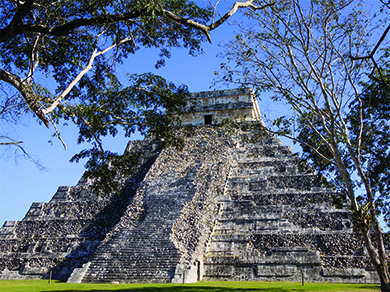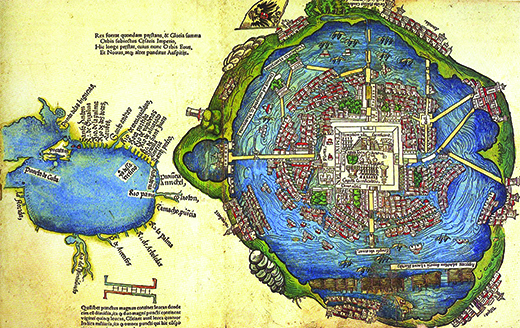| << Chapter < Page | Chapter >> Page > |

The Spanish found little organized resistance among the weakened Maya upon their arrival in the 1520s. However, they did find Mayan history, in the form of glyphs, or pictures representing words, recorded in folding books called codices (the singular is codex ). In 1562, Bishop Diego de Landa, who feared the converted natives had reverted to their traditional religious practices, collected and burned every codex he could find. Today only a few survive.
Visit the University of Arizona Library Special Collections to view facsimiles and descriptions of two of the four surviving Mayan codices.
When the Spaniard Hernán Cortés arrived on the coast of Mexico in the sixteenth century, at the site of present-day Veracruz, he soon heard of a great city ruled by an emperor named Moctezuma. This city was tremendously wealthy—filled with gold—and took in tribute from surrounding tribes. The riches and complexity Cortés found when he arrived at that city, known as Tenochtitlán, were far beyond anything he or his men had ever seen.
According to legend, a warlike people called the Aztec (also known as the Mexica) had left a city called Aztlán and traveled south to the site of present-day Mexico City. In 1325, they began construction of Tenochtitlán on an island in Lake Texcoco. By 1519, when Cortés arrived, this settlement contained upwards of 200,000 inhabitants and was certainly the largest city in the Western Hemisphere at that time and probably larger than any European city ( [link] ). One of Cortés’s soldiers, Bernal Díaz del Castillo, recorded his impressions upon first seeing it: “When we saw so many cities and villages built in the water and other great towns on dry land we were amazed and said it was like the enchantments . . . on account of the great towers and cues and buildings rising from the water, and all built of masonry. And some of our soldiers even asked whether the things that we saw were not a dream? . . . I do not know how to describe it, seeing things as we did that had never been heard of or seen before, not even dreamed about.”

Unlike the dirty, fetid cities of Europe at the time, Tenochtitlán was well planned, clean, and orderly. The city had neighborhoods for specific occupations, a trash collection system, markets, two aqueducts bringing in fresh water, and public buildings and temples. Unlike the Spanish, Aztecs bathed daily, and wealthy homes might even contain a steam bath. A labor force of slaves from subjugated neighboring tribes had built the fabulous city and the three causeways that connected it to the mainland. To farm, the Aztec constructed barges made of reeds and filled them with fertile soil. Lake water constantly irrigated these chinampas , or “floating gardens,” which are still in use and can be seen today in Xochimilco, a district of Mexico City.

Notification Switch
Would you like to follow the 'U.s. history' conversation and receive update notifications?